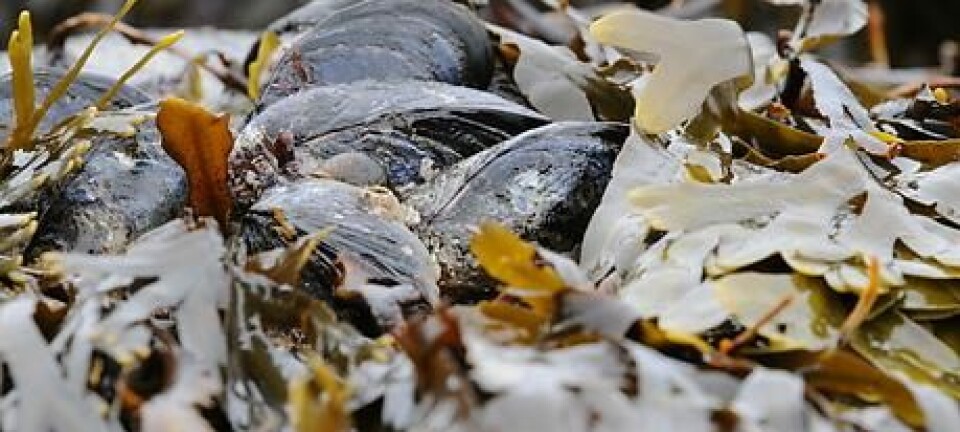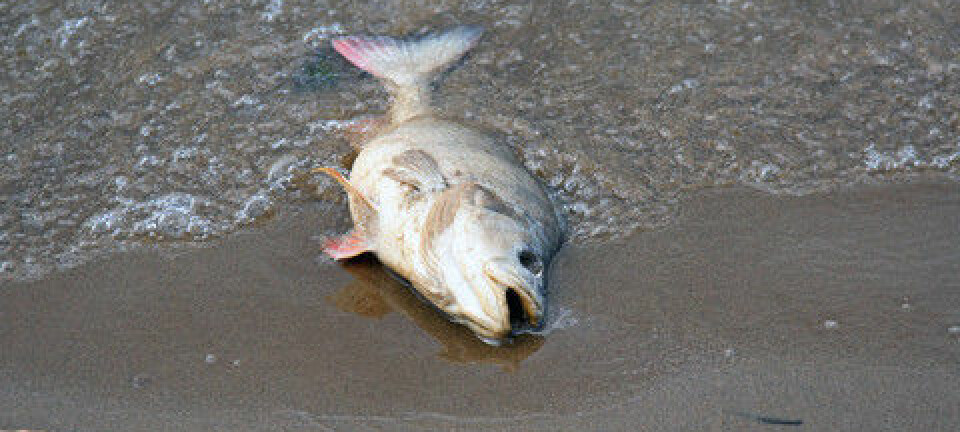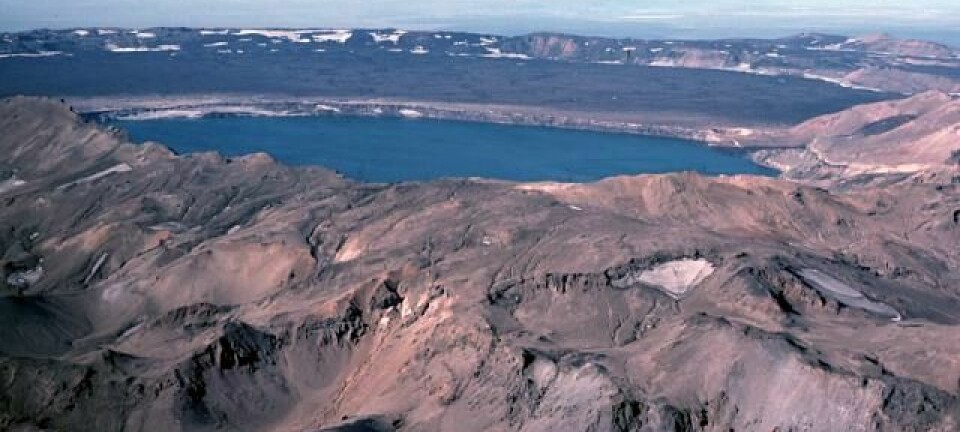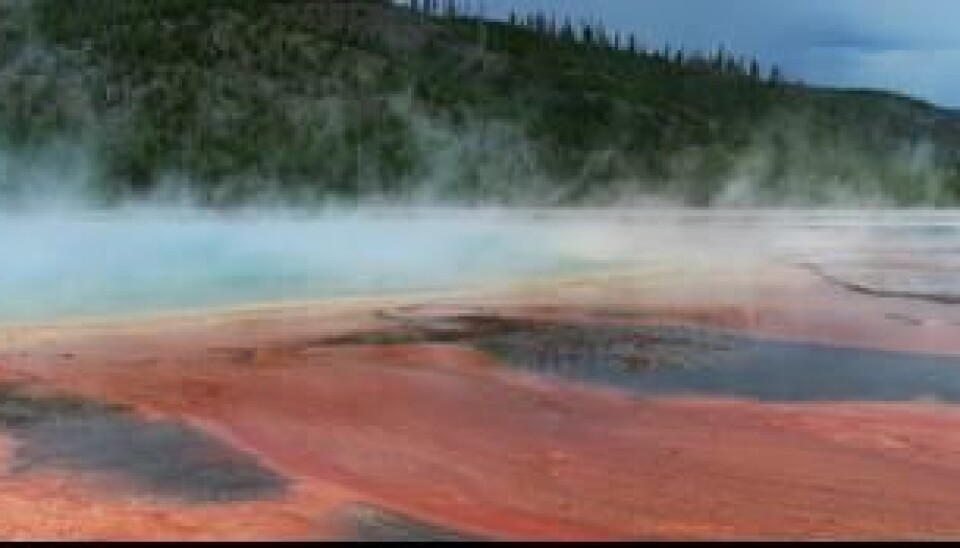
Hydrogen sulphide and lack of oxygen stifled early life
After the Triassic geological period gave way to the Jurassic, life was almost impossible on the seabed in coastal waters. The water here lacked oxygen but was rich in toxic hydrogen sulphide.
Some 200 million years ago, numerous volcanoes spewed large quantities of carbon dioxide into the atmosphere, which almost killed off all organisms on Earth.
The transition from the Triassic geological period to the Jurassic was marked by widespread mass extinction, affecting innumerable species.
As the volcanic activity died down, plant life recovered quickly, but animal life – previously uninhibited but restricted to the seas – needed another ten million years for its recovery.
Researchers from GEUS – the Geological Survey of Denmark and Greenland – recently unveiled the delayed recovery in sea animal life after the mass extinction.
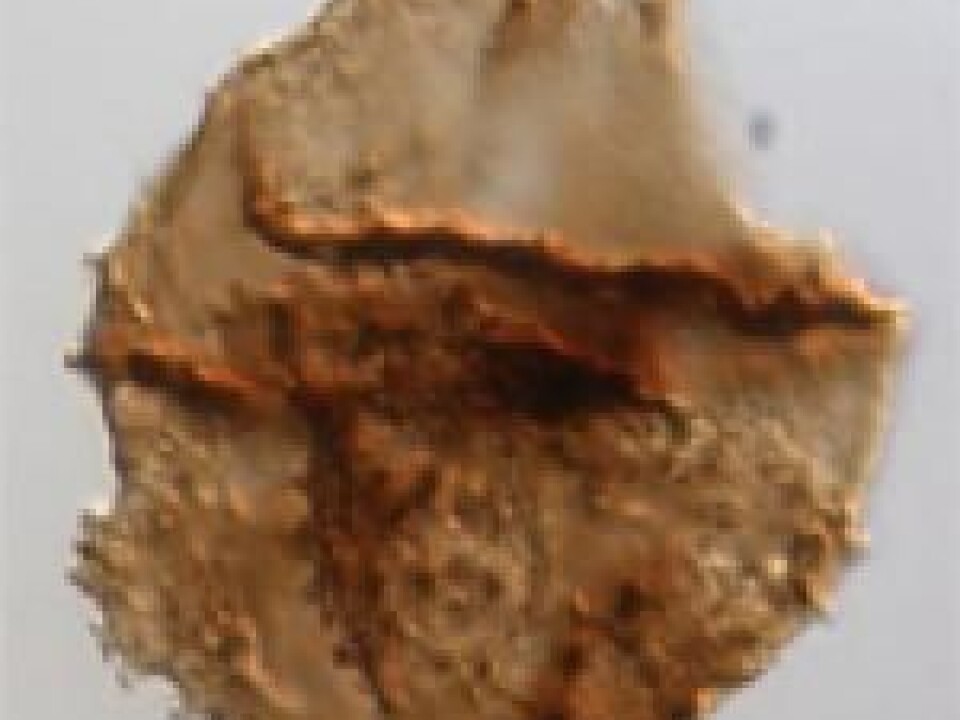
This discovery surprised the researchers, but now an international team, including Sofie Lindström from GEUS, has found an explanation, which has just been published in the journal Nature Geoscience.
“Our drill core samples illustrate the conditions for supporting life along the coastlines after the mass extinction catastrophe,” says Sofie Lindström, a senior researcher at the Stratigraphy Department at GEUS.
“The water along the coasts was virtually without oxygen, while it was polluted by large quantities of toxic hydrogen sulphide. This combination made the conditions for supporting life very difficult.”
Drill cores relate history
Lindström and her colleagues reached their conclusion after tapping data from two drill cores from the underground in Luxembourg and Germany.
The water along the coasts was virtually without oxygen, while it was polluted by large quantities of toxic hydrogen sulphide. This combination made the conditions for supporting life very difficult.
These cores contain remains from the seabed, which had been pressed together over the ages into sedimentary layers. Together, the many layers form a timeline that contains detailed information about what happened.
The researchers’ analyses showed that the number of aerobic red plankton and other organisms that lived on the sea bottom remained low after the catastrophe – where there were ten different families of red plankton before the mass extinction, there were only three afterwards. At the same time, the number of individuals fell so dramatically that the creatures became quite rare.
As red plankton are the first link in the food chain, this development hit all higher forms of life hard.
“Animal life tried to recover after the great catastrophe, but the massive lack of oxygen along the coasts repeatedly defeated these attempts,” says Lindström. “This made it difficult for life to recover after the catastrophe.”
Red plankton lost, green won
The analyses showed that organisms capable of living without oxygen, or unable to tolerate it, captured the seabed. This is evidence that there was very little or even no oxygen in the water close to the seabed.
The samples revealed a strong growth in green, sulphur-consuming bacteria, which breathe sulphur rather than oxygen. At the same time, green plankton – prasinophytes, which lived in upper water layers, where there was sufficient oxygen for them to live – replaced red plankton.
“The enormous amount of carbon dioxide spewed out by the volcanoes into the atmosphere at the transition from the Triassic to the Jurassic period resulted in global warming, acidification of the oceans and greater erosion of land areas, which led to increased run-off of nutrients to the seas,” she says. “Green plankton flourished as a consequence of this development.”
Global warming made things worse
The massive volcanic activity that caused the mass extinction, continued to hold life in a vice-like grip because of the carbon dioxide emissions.
Global warming probably changed the climate so it not only became warmer but also had increased rainfall, which sent more fresh water to the oceans. This layer of fresh water in the oceans may have worked as a barrier that prevented atmospheric oxygen reaching the depths of the oceans.
The lack of oxygen hampered the decomposition of dead animals and other organic material on the seabed in different ways, so large amounts of hydrogen sulphide formed and accumulated and green sulphur-consuming bacteria flourished.
“This prevented the water from circulating, which could have brought oxygen to the sea bottom,” says Lindström. “At the same time, the nutrients on the sea bottom couldn’t rise up in the water and give nourishment to the animals and plants that lived in higher water layers despite the harsh environment.”
Everything comes to an end, however, and oxygen did reach the seabed at some point, so life as we know it flourished.
“Luckily there were living organisms elsewhere, otherwise life couldn’t recover,” she says.
“Not all forms of life were wiped out during the mass extinction, but it took a long time before animal life generally recovered – but when that happened, it was very quick.
“When the seabed was oxygenated again, organisms suddenly had much more room for growth, which probably gave life a boost. The red plankton re-established themselves and quickly developed new species, which made sustaining life easier for higher animals.”
Sylvain Richoz from the University of Graz is the first author of the research article. The second author is Bas van de Schootbrugge from Goethe University in Frankfurt.
-----------------------------
Read the Danish version of this article at videnskab.dk
Translated by: Michael de Laine
